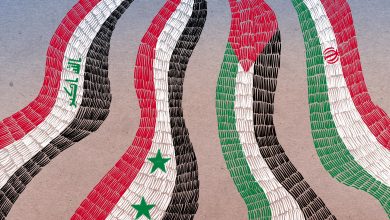India’s Tryst with Demonetization

Commotion and crowding outside a bank as citizens clammer to comply with the 50 day government notice (image by Kottakkalnet via Wikimedia Commons / CC BY 4.0)
At the stroke of midnight, on Nov. 8, 2016, the world’s largest democracy – India – had nearly 86% of its banknotes in circulation demonetized by the government.
Demonetization is the act of stripping a currency unit of its status as legal tender. Often, this implies decommissioning certain forms of notes or coins from circulation and replacing them with new ones.
The Reserve Bank of India withdrew the currencies of 500 and 1000 INR. Over the span of the next 50 days, Indian citizens were asked to either deposit the demonetized notes into their bank accounts to claim credit that can later be accessed by credit or debit cards, or they could exchange the old notes in cash for the newly issued 500 and 2000 INR denomination ones.
This economic measure, though sudden in nature, has a historic precedent of being used as a tool to bring a swift change under various circumstances. The Soviet Union used it in 1991 in an attempt to fight corruption and recover from commodity shortages, Zimbabwe in 2015 implemented it to steer away from hyperinflation, and Myanmar in 1987 tried to curb black marketeering by recalling certain currencies. Despite these noble incentives, the execution of this move has produced mixed results and has been often denounced. Demonetization has been credited with the dismantling of the Soviet Union as well as with leading to the 8/8/88 uprising in Myanmar. Zimbabwe swapped hyperinflation for deflation and depressed growth.
In the context of India, prior to 2016, when demonetization was employed to clamp down on the black market in 1946 and 1978, the results were far from those desired. Last year, with a mostly cash-based economy, the government again cited the underground market and the use of high-currency denominations to fund anti-national terrorist groups as the reasons for their withdrawal.
The idea was initially lauded by many politicians; however as time progressed, the cash shortage resulting from delayed printing of new notes and limits on cash withdrawals and deposits in banks turned many against the move. In 2015-16, cash was estimated to comprise only 6% of the black wealth, the other forms of which are stocks, real estate, properties and businesses. Hence, with 80% of the demonetized notes being circulated as white money amongst ordinary citizens, the move disproportionately affected rural and low income households, as reported by the Committee on Subordinate Legislation.
With only 50 days available to redeem the value of old notes and the paucity of printed cash, there were serpentine queues outside several banks and ATMs. This was worsened by the fact that nearly 33% of the 138,626 bank branches are in 60 Tier-1 and Tier-2 cities, inflicting additional hardships on rural India.
Furthermore, most of rural India depends upon agriculture and a shadow economy to survive. A sudden change devaluing highly circulated currencies, implied that a significant amount of agricultural produce was worthless and thus, went to waste. The manufacturing and automobile industries that are highly dependent upon cash for transactions were hit too, as reflected in plummeting sales.
The devaluation of certain forms of currency made matters worse for women, especially ones who were the single bread winners of their families. In India, 80% of the women are not registered in the banking system, which makes it difficult for those who make their living through the shadow economy and save in cash to get by. The stress and strain of the process, and often the lack of means to secure currency, also led to fatalities. Unfortunately, the government downplayed these deaths as pain that the nation could bear for 50 days, as it allegedly await golden times ahead.
Amidst all of this, the wrongdoers seem to have gotten away. The amount of banned notes reported to have been returned to the banks is significantly higher than the government’s prediction, implying those that could be implicated found a way to either successfully legitimize the currency or to muscle it through the system. Thus, it appears that the move on black money did not yield the results that were sought.
Five months after the drastic move, things have looked up. As the country witnesses the fallout of this demonetization ebbing, vehicle sales and the PMI manufacturing index have shown an upward trend. The GDP growth rate for the 4th quarter of the 2016-17 fiscal year was pegged as 7%, higher than predictions made by the IMF, the Reserve Bank of India, and Reuters.
Several critics are skeptical of this number, as they state that the Central Statistics Office which releases GDP data, follows a method that undermines the informal sector and might overestimate the private sector contribution. While most of the currency is back into circulation, five months on, the benefits of this move are debatable. Luckily for the government, they still retain popular support to enforce legislation like the Goods and Services Bill that is being touted to change the current cumbersome indirect tax system and welcome more investment.
In the global picture, post India’s demonetization move, countries like Pakistan and Venezuela attempted to follow suit. While Pakistan backed out after an initial spate of enthusiasm, the Venezuelan government has been postponing its measure to withdraw the 100 Bolivar note amidst protests and a severe economic crisis. The latest date announced for the validity of the old notes is May 20, 2017.
Demonetization, as time has shown, is more often than not met with uncertainty and misgivings. The Indian parliament’s first liaison with the move was in 1946, and 60 years later, she courted her for the third time.
Incredulously, the economy and the citizens of the country, have been steadfast and enduring through it all.




